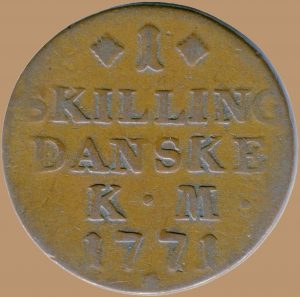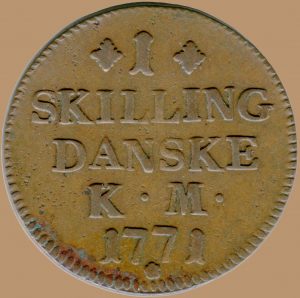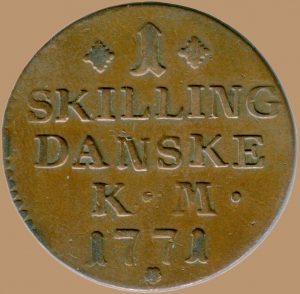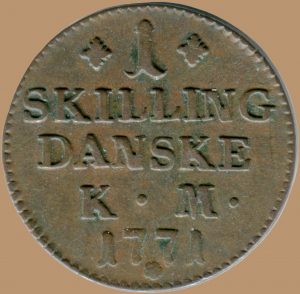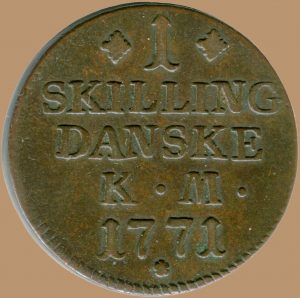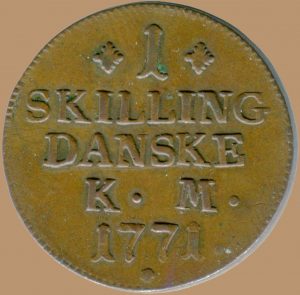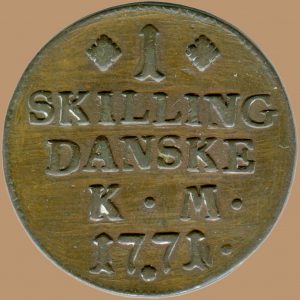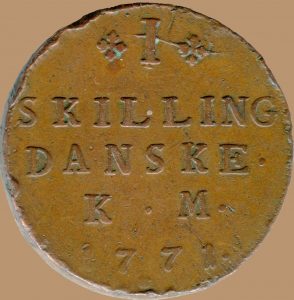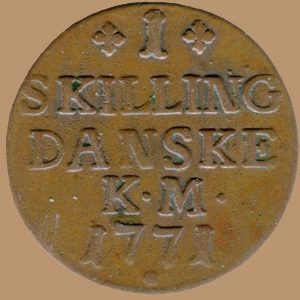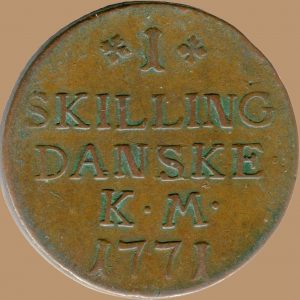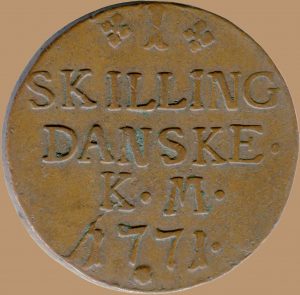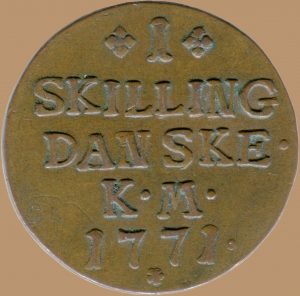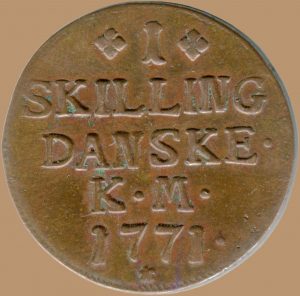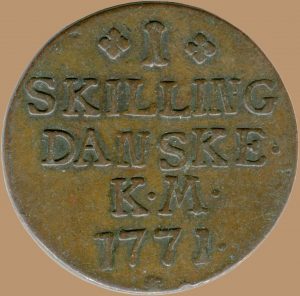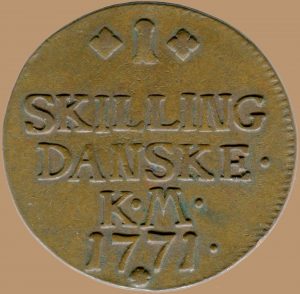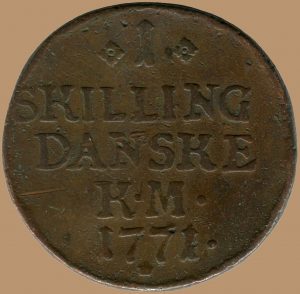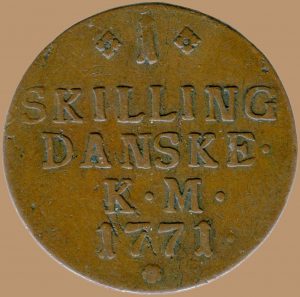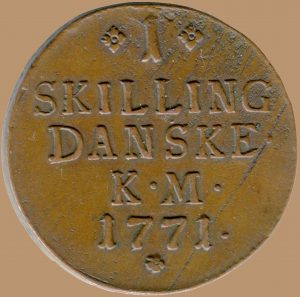Identify your coin
So you have a 1771 skilling coin at hand and want to find out which one of the variations you’ve acquired? Here are some simple guidelines to help you out:
1. Do I have an Altona, Copenhagen or Kongsberg coin?
We notice that most people find it difficult to distinguish between the various variations and originations. Sometimes even coin dealers have a hard time in this regard. But there are in fact very many nuances to look out for that easily reveals the true identity of a 1771 skilling coin. We’ve therefore divided the various dies into 77 different sub-categories based upon relevant differences.
The easiest way to quickly see the origination of the coin is to look at the rosettes on each side of the top “1” at the reverse. In the table below, we’ve lined up some scans of typical half-worn rosettes that can be found on coins from the three originations:

While we readily admit that the difference between 1a, 2a and 3a can be hard to spot at first glance, it’s actually not so hard when you know what to look for. The three different rhombus-shaped rosettes have a different underlying shape and size as the Altona-rosettes give a more "postage stamp" impression, shape 2a is derived from 2d and shape 3a is derived from 3b.
If you’re still in doubt about the origination of your coin after studying the top rosettes, just turn your coin and look at the shape of the two “7”s. Below we’ve illustrated the eye-catching difference that actually exists between the Copenhagen “7” and the Altona “7”. Inside the red circle, we see that while Altona has a curved ending, the Copenhagen numbers are much straighter. It should be noted that there is more variation in the shape of Copenhagen obverses as the monograms are made individually by hand for each die, while the Altona obverses have a fixed monogram. To make things complicated, even if you've managed to identify the origination of your obverse, there's a 2% chance that the reverse has a different origination due to die mixes. You can read more about them under "Type 5" at the Altona page.
The problem with this methodology is that the Kongsberg “7” is quite similar to Altona for the untrained eye. Therefore, it can be useful to look at the space between the curl of the “C”s and the lower part of the “7”s (inside the green circle) that is smaller for the Altona variations. In addition, most of the Kongsberg obverses have larger and higher placed "C"-curls (marked with blue rings) than the low and smaller Altona curls, but this is a rule with a few exceptions.

2. Which variation category do I have?
Now that you’ve established the origination of your coin, it’s time to narrow the search further and find the variation category. Under the Altona page, the Copenhagen page and the Kongsberg page, we’ve given a quite detailed overview over the chronological development that distinguishes one variation category from another. Some of the differences can be quite subtle, so a good magnifying glass or preferably a camera or scanner will help you out enlarging the coin image and discern the details. In the end, you’ll need to browse the relevant gallery page to find the exact variation that you’ve come across.
Below, we’ve listed reverses from the 18 main categories to hopefully make the hunt easier:
Altona
Copenhagen
Kongsberg
